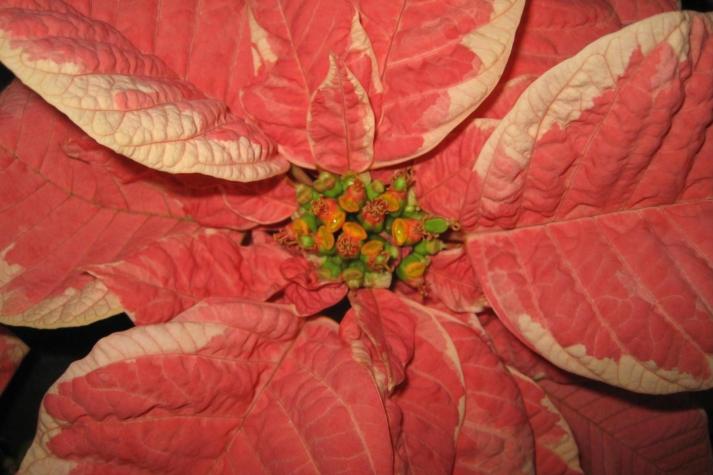COLUMBIA, Mo.– Although scientific studies have declared the poinsettia harmless, the plant still has a questionable reputation regarding its safety, said a University of Missouri Extension horticulturist.
“It’s a myth that poinsettias are toxic,” said David Trinklein.
The myth dates back to a 1920 academic article about poisonous plants in Hawaii that included an unconfirmed account of a 2-year-old dying after eating poinsettia leaves. The tale was repeated in a 1944 textbook and the poinsettia’s toxicity was enshrined as scientific truth.
“Well-meaning people in quite popular publications list certain holiday plants that are toxic and should be kept away from children,” Trinklein said. “Poinsettia is often on the list.”
In the 1970s, researchers at Ohio State University fed lab rats an amount equivalent to a 30-pound child eating 50 poinsettia leaves and observed no ill-effects. In 1995, researchers in Pittsburgh reported their analysis of more than 20,000 cases of poinsettia ingestion by people. More than 90 percent of the patients showed no ill-effects. Fewer than 40 individuals complained of anything beyond minor effects such as upset stomach. There were no deaths and no cases in which patients became critically ill.
That’s not to say you should brighten your salads with poinsettia leaves, Trinklein notes. They are reputed to have an unappetizing taste, and a small number of people might suffer severe allergic reactions from eating poinsettia. It’s possible, though unlikely, that the leaves could contain trace amounts of pesticide residue, he said.
At first glance, the source of the poinsettia’s striking red features might look like flower petals. They are actually a type of leaf, called a bracht, evolved to attract pollinators to the plant’s inconspicuous flowers.
Some holiday greenery is genuinely poisonous, Trinklein said. Holly berries and both the leaves and berries of mistletoe are somewhat toxic. The English yew contains alkaloids called taxanes whose toxicity has been harnessed to kill cancer cells in chemotherapy. English ivy is toxic in large amounts and can cause severe skin irritation.
The poinsettia is named in honor of Joel Roberts Poinsett (1779-1851), who was the first United States ambassador to Mexico. He failed in his assignment to secure the purchase of Texas, but he did bring home colorful plants that Franciscan priests in the town of Taxco used in nativity processionals. The scientific name of the crevice spiny lizard, Sceloporus poinsetti, also is named after Poinsett, but these reptiles are not used for holiday decoration.
###
